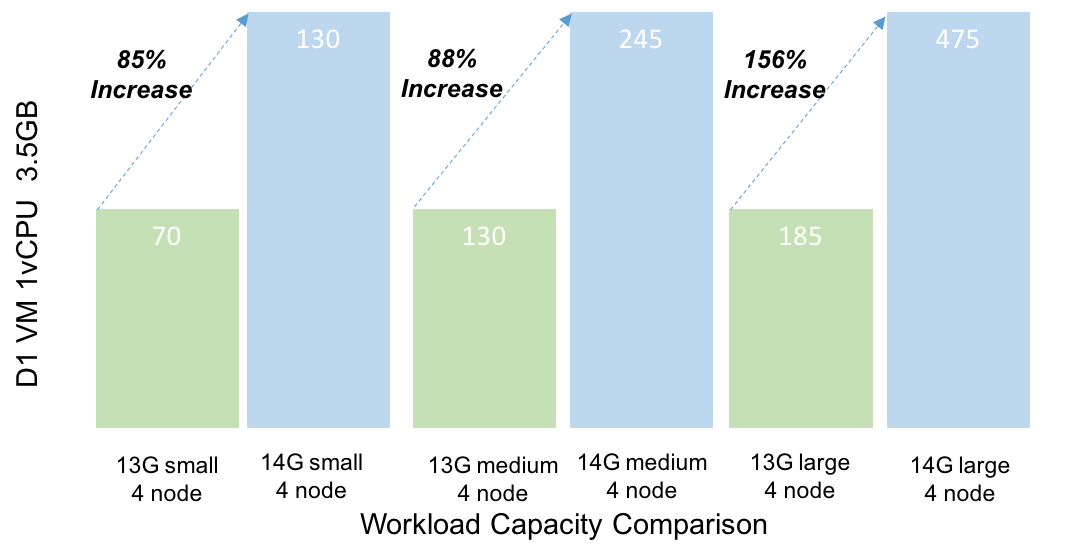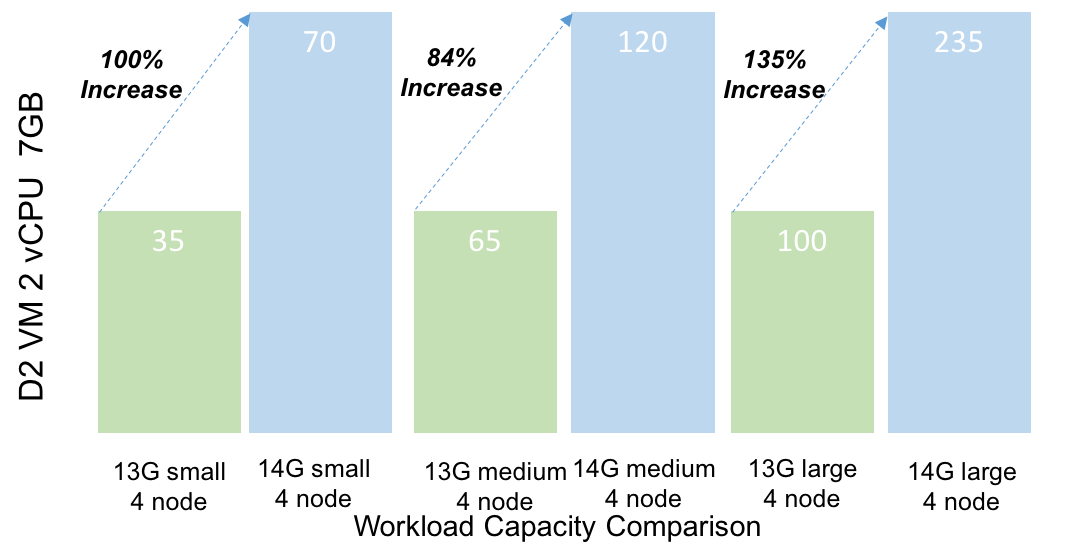Dell EMC had a very eventful Microsoft Ignite in Orlando just a few weeks ago, engaging with countless customers and partners. While we showcased the breadth of our entire portfolio for Microsoft customers, the HOTTEST topic—across the board—was Microsoft Azure Stack.

It’s been an exciting journey on the path to deliver the Dell EMC Cloud for Microsoft Azure Stack, and, frankly, we believe we have an incredible and differentiated offering for our customers and channel partners globally. Early interest has exceeded expectations, and our solution is about to get even better—and only weeks after we began shipping to customers.
Today, we’re thrilled to unveil Dell EMC Cloud for Microsoft Azure Stack on our new Dell EMC PowerEdge 14th generation (14G) servers powered by Intel Xeon Scalable Processors. Order ability starts this November, and we believe we’ll be the first to offer next generation compute for Azure Stack when we begin shipping globally this December.
This is great news for our customers as the 14th generation of PowerEdge servers are purpose-built for hyper-converged infrastructure. This software stack integrated into PowerEdge servers will pack-in power and security while optimizing performance as a result of rigorous testing and validation. Why is this important for our Dell EMC Cloud for Azure stack?

With this newest generation of PowerEdge servers, Dell EMC Cloud for Microsoft Azure stack will provide customers greater:
- Price performance – offering even better price for performance with the industry’s latest compute technology
- Capacity – including up to 156 percent more workload density
- Scalability – offering organizations investment protection to run more Azure Stack workloads with a platform that is easily expandable for years to come
Take a look at example density improvements with our 14G platform for the Dell EMC Cloud for Microsoft Azure Stack:


With this large increase in overall capacity, the Dell EMC Cloud for Azure Stack’s hyper-converged infrastructure enables customers to successfully support more workloads in less physical space and original configuration size and standardize on a turnkey hybrid cloud platform that offers the flexibility to support expansion capabilities in the future. This is critical for customers who want a consistent experience across Azure—whether it’s Azure public cloud or on-premises Azure Stack—for the long term.
Let’s be clear: “cloud” isn’t a place, it’s an operations model, and IT organizations are expected to deliver a consistent end-user experience wherever data and applications reside. Dell EMC’s Azure Stack platform makes all phases of the life-cycle (acquisition, deployment, operation and maintenance) a repeatable, predictable, turnkey experience—in keeping with the public cloud experience. Interoperability between public and private cloud resources has quickly become not just a “nice to have” but an absolute, top requirement for most organizations’ IT infrastructures.
Dell EMC Cloud for Microsoft Azure Stack delivers unmatched levels of integration, automation and manageability and enables customers to increase IT efficiencies while adopting a Dev/Ops model. We’re the only vendor able to provide an Azure Stack turnkey hybrid cloud platform that offers:
- A solution from the industry-leading hyper-converged infrastructure provider with a foundation of Dell EMC PowerEdge servers and Dell EMC Networking, offering flexible capacity and performance options.
- Simple, self-service, policy-enforceable encryption-as-a-service, through Dell EMC CloudLink SecureVM, which provides granular control of where and under what circumstances VMs are allowed to boot and access sensitive data.
- Dell EMC best-in-class backup and recovery technologies, which allow you to protect your Azure Stack applications with confidence and align service levels to cost objectives.
- Reduced complexity and risk since we manage the component lifecycle for the entire hybrid cloud platform.
Furthermore, the adoption of Pivotal Cloud Foundry® on Azure extends to Dell EMC Cloud for Microsoft Azure Stack, continuing to deliver the promise of hybrid models with consistent services, APIs and consumption models for on- and off-premises.
We believe Azure Stack has great potential, and we’re meeting with several businesses that agree. For example, here’s what our partners, Candidator and Pulsant, had to say:
“Dell EMC is the trusted partner of Candidator for Microsoft Azure Stack in the Nordic region. Together, we bring innovation to our customers maximizing the potential with Azure Stack. Dell EMC’s long history and extensive portfolio delivers the foundation for our business, and we see Azure Stack as strategic investment in the future to help our joint customers undertake their IT and digital transformations. Candidator is known for delivering innovative technology to their customers and, with Azure Stack, will continue our promise to customers to be their partner and help them focus on their core business. Azure Stack will deliver the bridge from on-premise to public cloud, leveraging the best of both worlds. Candidator will deliver Azure Stack as a service to our customers to provide a competitive advantage as well as full transparency from cost to delivered services.” — Ketil Neteland, advisor, Candidator
“With the recent launch of Azure Stack, the future of hybrid cloud is here. Yet, for many businesses, they feel unable to justify the investment required in the new solution. By working closely with Microsoft and Dell EMC, we have developed AMP Launch Pad, a single node appliance with the latest version of Azure Stack pre-installed on it. It is a cost-effective, low barrier of entry way of getting to grips with the technology and means business can enjoy all of the functionality at a fraction of the price. With an emphasis on hybrid deployments and the changes they can deliver to organisations, many find themselves at the next stage in their cloud evolution journey. As Azure Stack launches, the time has never been better for those businesses that have so far been reticent to take that first step.” — Stuart Nielsen-Marsh, Microsoft cloud strategy director, Pulsant
It’s clear that organizations are moving to a hybrid cloud strategy. Chad Sakac, president of Dell EMC’s Converged Platforms & Solutions Division, breaks down exactly why in this Mythbusters video:
For additional information, please visit Microsoft’s latest Azure Stack blog and our webpage: www.dellemc.com/mhc.